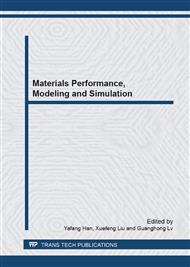p.282
p.287
p.294
p.299
p.303
p.308
p.316
p.322
p.328
Effect of Partitioning Time on the Microstructure and Mechanical Properties of Q&P Steels
Abstract:
The microstructure and properties of Q&P steel were studied by means of tensile test, OM and SEM after simulating heat treatment process in salt bath furnace. The results showed that the main microstructure of Q&P steel was lath martensite and retained film austenite. With the increase of partitioning time, the morphology of the parallel martensite lath became clear and ordered. With the trivialness and disorder with massive martensite appearing, the yield strengths and tensile strength decreased initially and then increased. On the other hand, the elongation increased initially and then decreased. This was because of that the retained austenite is unstable at the beginning for low carbon content, and the carbide precipitated after a long partitioning time. Therefore, there was an optimum partitioning time to obtain the best properties combination. Under 250 quenching temperature and 350 partitioning temperature, partitioning time was 60s, the tensile strength and elongation were 1027MPa and 27%, respectively. The product of strength and elongation was up to 27729MPa·%.
Info:
Periodical:
Pages:
303-307
Citation:
Online since:
March 2013
Authors:
Keywords:
Price:
Сopyright:
© 2013 Trans Tech Publications Ltd. All Rights Reserved
Share:
Citation:


